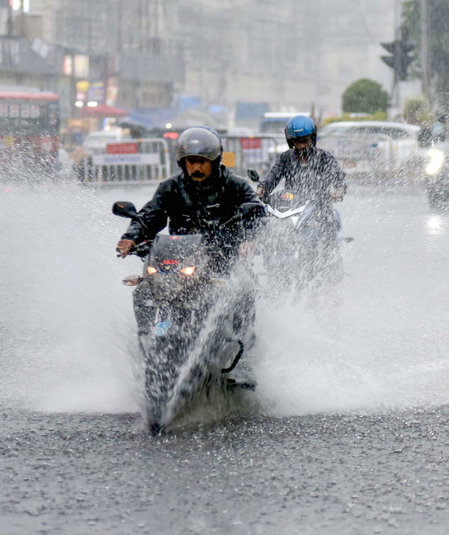Chennai is bracing for heavy rain as a deep‑depression, formed over the southwest Bay of Bengal, speeds toward the northern coast of Tamil Nadu, Puducherry, and southern Andhra Pradesh. According to the Regional Meteorological Centre (RMC) in Chennai, the storm will hit the coasts within the next 24 hours.
The system started as a weak low‑pressure area, grew into a depression, and finally became a deep depression. Although forecasters once warned it could become a full‑blown cyclone, the storm’s proximity to land disrupted its structure and kept the pressure from dropping further. Now the deep depression is expected to bring widespread rain, thunderstorms, and lightning across Tamil Nadu, Puducherry, and Karaikal over the coming days.
The RMC has issued moderate‑to‑heavy rainfall warnings for five districts – Chennai, Tiruvallur, Chengalpattu, Kancheepuram, and Ranipet – where isolated heavy showers could hit Thursday evening. Meteorologists say that after making landfall the storm may drift inland, weaken slightly, and then move back out to sea around Sunday, 26 October. If it does, the system could refuel over water and produce another rain spell early next week.
Chennai’s skies are already pouring. The city and nearby suburbs report steady, sometimes intense, downpours. The northeast monsoon, which began on 16 October, has been active along northern coastal districts for several days, driving the current weather pattern.
In response, the Tamil Nadu government has activated a comprehensive preparedness plan. The Greater Chennai Corporation (GCC) has deployed more than 24,000 personnel for relief and rescue operations. The organization opened 215 relief camps and 106 community kitchens and set up control rooms and helplines to handle public complaints and coordinate flood relief. The Water Resources Department has increased monitoring at key reservoirs such as Chembarambakkam and Poondi, ready to release excess water and prevent flooding. Police and fire service teams remain on high alert, positioning rescue units at vulnerable points.
Officials urge residents in low‑lying and coastal areas to stay cautious, avoid unnecessary travel, and heed weather advisories. Keep your windows closed, stay away from swollen rivers, and be prepared for possible power outages. Early notification and quick action can protect people and property from the coming storm.
Source: ianslive
Stay informed on all the latest news, real-time breaking news updates, and follow all the important headlines in world News on Latest NewsX. Follow us on social media Facebook, Twitter(X), Gettr and subscribe our Youtube Channel.



